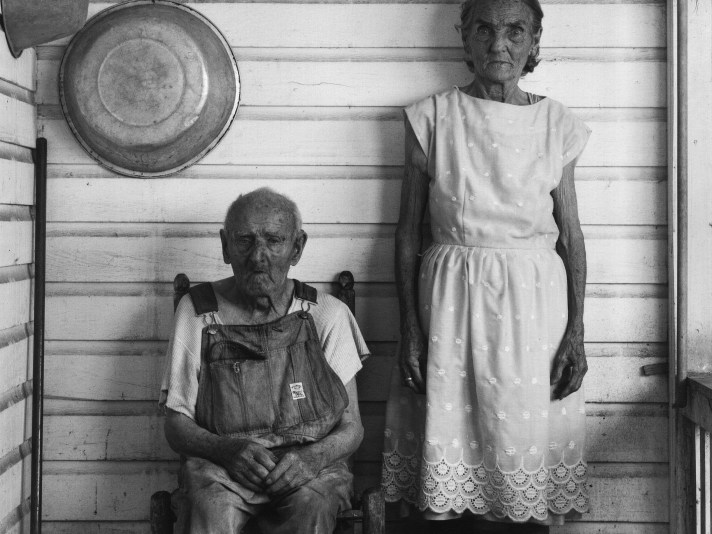
SHELBY LEE ADAMS
Appalachian Lives
September 4, 2003 through October 18, 2003
Reception for the Artist: Thursday, September 11, 7-9 pm
The Fahey/Klein Gallery is pleased to present, in his first Los Angeles exhibition, the photographs of Shelby Lee Adams. For over twenty-five years, Shelby Lee Adams has photographed the mountain backwoods families of Appalachia. His new publication Appalachian Lives (University Press of Mississippi) focuses on families who now favor cable television, identifiable brand names and advertising logos. Shelby Lee Adams shows Appalachian people as valiant, admirable individuals rather than mere stereotypes.
In the introduction to Appalachian Lives Vicki Goldberg says, "Adams looks at a difficult subject with an artist's eye. At their best, the complicated and ambiguous pictures in this book are an uncommon blend of humanity, reportage, and art, an Appalachia most of us thought we knew, seen through the eyes that tell us that maybe we didn't know it so well after all."
Working in the tradition of renowned photographers August Sander and Dorthea Lange, Adams illuminates his time and place. In Appalachian Lives, Shelby Lee Adams returns to his home state of Kentucky to continue a body of work that has received increasing acclaim over the past three decades. His intention was to document the lives of the people who live there, some are his friends and some are relatives. His purpose is to enrich and challenge the outside perceptions viewers may have of Appalachia. Adams's previous books Appalachian Portraits (1993) and Appalachian Legacy (1998) both by University Press of Mississippi, established the grace, intelligence, and with which Adams depicts life, as well as the candor and straightforward honesty he evokes from his trusting subjects. (University Press of Mississippi)
In a photograph titled Driving Straight to Hell a man sits in driver's seat of his 1979 pick-up truck. There is a tapestry of stallions inside the roof of the truck and white cassette tapes tossed on the dashboard; the radio is nothing but loose wires and lost tuning knobs. It is night, the man laughs with a toothless smile, a cigarette in his hand.
In a more formal portrait, Eric with Spike the Rooster, a boy, who appears to be about ten years old, stands shirtless in front of weathered wall. The paint is pealing and siding boards are loose. Eric has boyish freckles and a closely cropped haircut but his eyes are deep and dark a he has a scar on his chin nearly half the size of his mouth. The pet rooster is probably tough for Eric to hold with its menacing talons and large body.
"My work has been an artist's search for a deeper understanding of my heritage and myself, using photography as a medium and the Appalachian people as collaborators with their own desires to communicate. I hope my photographs confront viewers, reminding them of their own vulnerability and humanity. I hope, too, that viewers will see in these photographs something of the abiding strength and resourcefulness and dignity of the mountain people." (Shelby Lee Adams, introduction to Appalachian Portraits)
Shelby Lee Adams has been exhibited both nationally and internationally. His work is included in many private and museum collections. In 1978 and 1992 he was awarded the National Endowment for the Arts grant.
